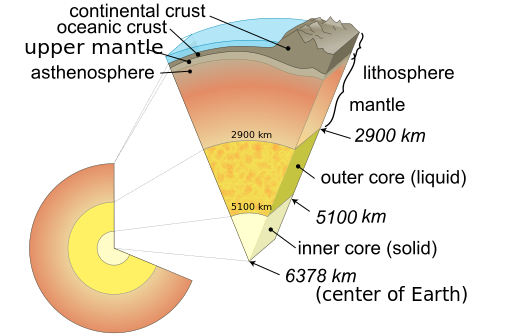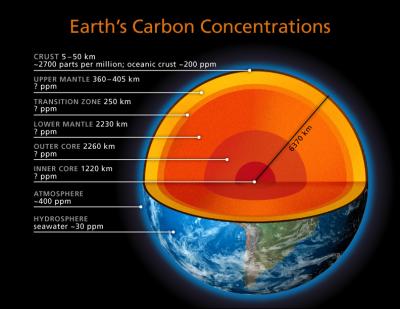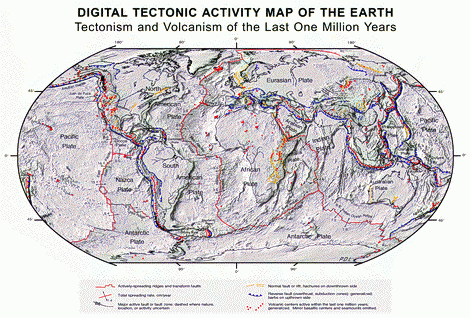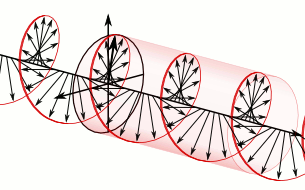 Feeling the earth rumble under you has got to be one of the scariest moments you could experience. It may feel like the whole planet is moving and you are helpless to stop it or even run for safety. If you are one of those unlucky people who have experienced this, you are not alone, as thousands of others have also felt this unsettling thunder under their feet.
Feeling the earth rumble under you has got to be one of the scariest moments you could experience. It may feel like the whole planet is moving and you are helpless to stop it or even run for safety. If you are one of those unlucky people who have experienced this, you are not alone, as thousands of others have also felt this unsettling thunder under their feet.
Fortunately, these movements, more commonly called – earthquakes, last less than a minute, but the damage they leave behind in both human lives and property is incomprehensible.
So you ask yourself – why did this happen? What can be done about it? Let’s delve into what causes earthquakes and see if we can remove the mystery of why the earth moves.
The Tectonic Plates

Slow-moving plates are of course nothing that we should really get excited about, but it is when there is a heavy movement of these plates that we should begin to worry.
The plates are broken up into 12 regions, like 12 pieces of a jigsaw puzzle that are connected to each other. When the plates move, they bump into each other at their connections, officially called boundaries, causing collisions, or conversely, breaking away from each other.
The image above is a historical account of previous earthquakes and depicts where these boundaries exist, which are called fault lines. The colors represent how intense the plate movements were; that is, how intense the earthquake was. It is also at these fault lines that when the plates move, volcanoes and tsunamis occur, and mountains can be created. As you can see, there is an abundance of fault lines across the entire west coast of the United States.
What lies directly under these plates is the source that causes the tectonic plates to move.
The Earth’s Mantle

Under the plates is the mantle, which consists of magnesium and iron-bearing silicates. You can think of the tectonic plates as the ‘skin’ of the earth, analogous to the skin of an apple. So when there is movement in the mantle, the plates above it feel this movement and they will move accordingly. How much movement is dependent upon the intensity of the changes within the mantle.
How are the Plate Movements Quantified?
Earthquakes are caused by these collisions, as one plate moves over the other the earth shakes. The measurement of intensity is rated using a Richter Scale, which records the magnitude of the collisions, with ‘1’ being unnoticeable, up to ’10’, which can cause massive death and destruction. Fortunately, an earthquake of ’10’ is very rare.
What is the Current Theory of Plate Movement?
The reason why the plates move is still under conjecture, but one theory is that heat from radioactive processes within the planet’s interior is what causes the plates to move.
The latest theory is called slab pull, where areas of the lithosphere become less dense than the asthenosphere. This causes these areas above to sink further down into the mantle, pulling slabs of the lithosphere apart, and causing the plates to move in different directions. As a result, these regions are spreading or rifting,

The Latest Findings
As it turns out, such interactions between continental plates is not the only reason for these various geological processes. Research led by a joint team of the University of Toronto and the University of Aberdeen has achieved an enormous breakthrough!
According to the study that uses supercomputers to run a model of the Earth’s upper mantle and crust, prehistoric geological events could have left deep ‘scars’ that may play a significant role in earthquakes, tsunamis, formation of mountains or ocean trenches, and many other ongoing geological processes.
The models created by the researchers indicate that the previous plate boundaries could stay buried deep below the surface of the Earth. These structures, which are no less than many millions of years old, are located far from the current plate boundaries and may cause drastic changes in the surface properties and structure of the interior of the continents.
The researchers went a step further to propose a new map highlighting the ancient geology of the Earth. The ‘perennial plate tectonic map’ explains through illustrations how these prehistoric geological events could affect today’s geological processes. The map is based on the common tectonic map, which is taught in elementary school, but it has been modified to include the concealed, ancient plate boundaries that may be involved in plate tectonic activity in the past as well as the present.
Owing to this breakthrough, some major revisions are required to the fundamental idea of plate tectonics. The research paper titled, ‘Lasting mantle scars lead to perennial plate tectonics’ appeared in the Nature Communications issue of June 10, 2016.
Conclusion
So we see that plate movements below the Earth’s surface can cause these disturbances to occur, but how they occur is still a forum for debate. At least we know where it happens most (fault lines) and as best we can, precautions have been and will be taken for earthquakes to minimize damage.



